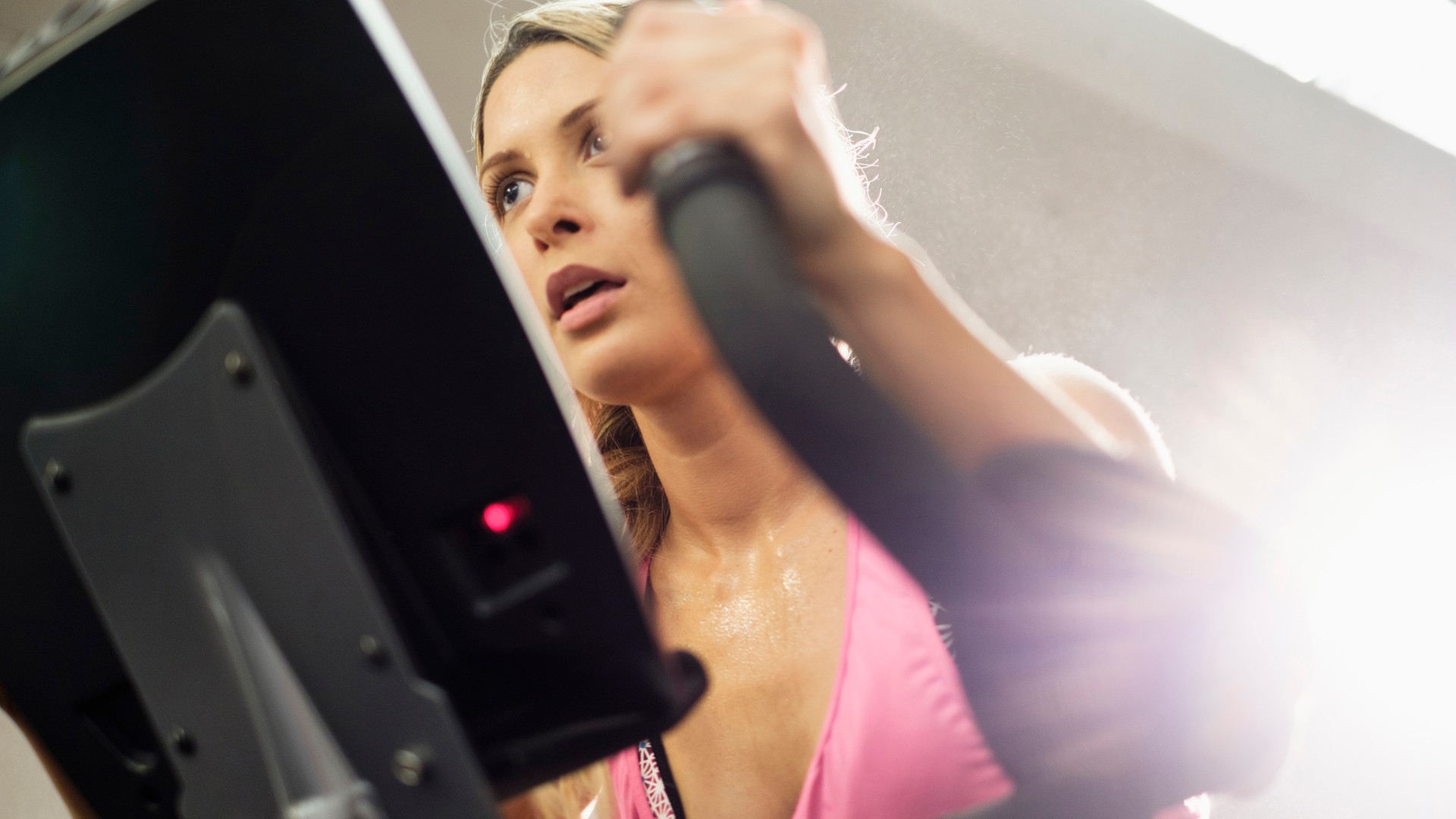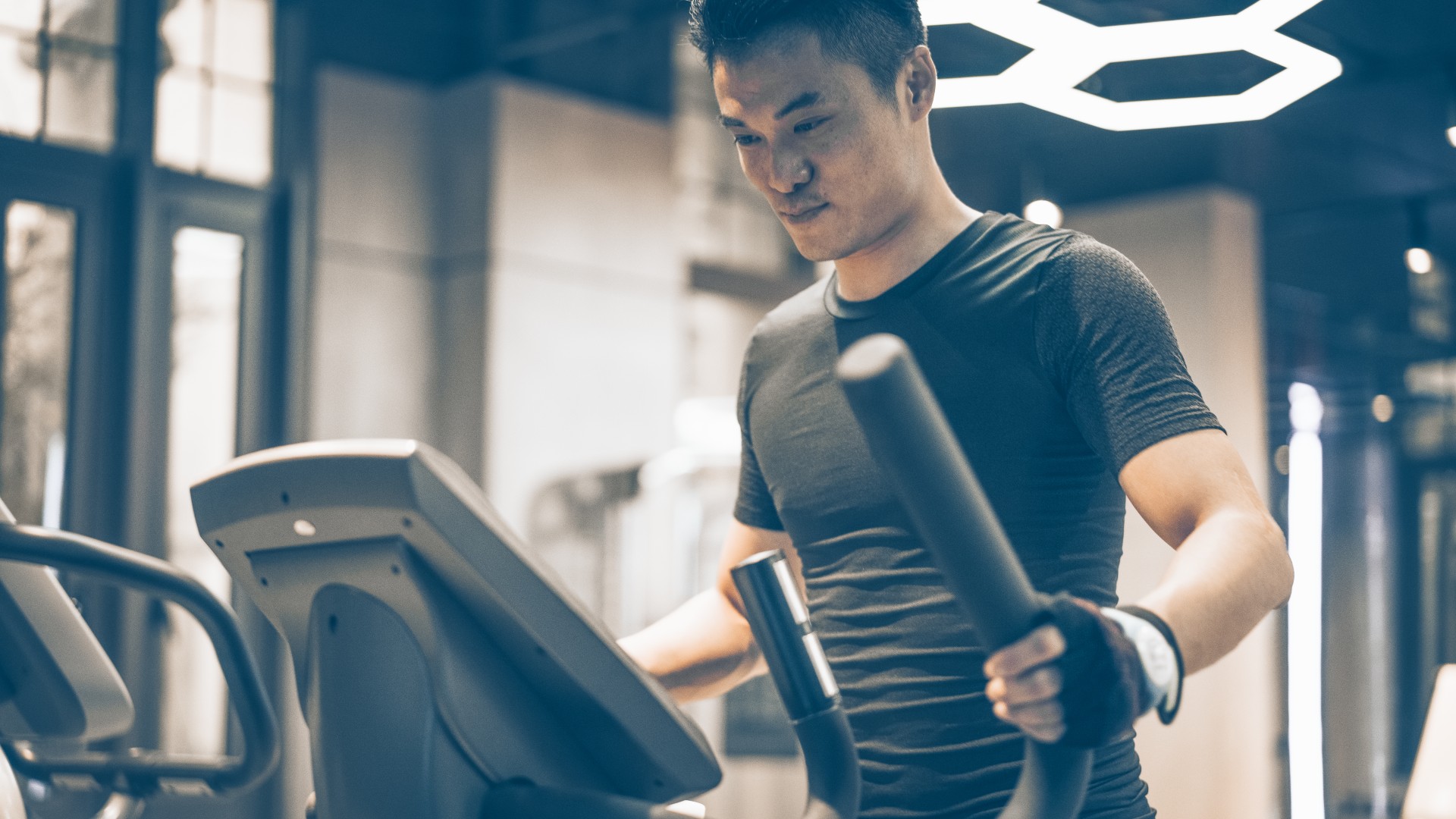How get the most out of your elliptical machine: Expert tips revealed
Want to lose weight or tone up? Get the most out of your elliptical machine or cross trainer with these essential tips


There are many reasons why you might want to fit in a workout on one of the best elliptical machine models. Not only do they provide a low impact workout which protects your joints while burning calories, but thanks to the ability to change the resistance, they’re also useful for building muscle. They even work your arms and core too, something even the best exercise bike can't do. So, it’s fair to say that neglecting this cardio machine would be a shame!
But whether you're using one of the best elliptical machines at the gym, or you're lucky enough to own your own, you might not know how to get the most out of it. Here, we've got a trio easy to follow workouts that focus on three key areas; endurance, muscle building and fat loss.
How to use the elliptical machine correctly
Before you hop on to the elliptical machine, it’s worth getting clued up on your form.
Tim Andrews, Head of Fitness Product at Fitness First, explains that because ellipticals are so easy to use, technique is sometimes over looked.
"Some people experience numbness in the legs when using an elliptical. This is usually because exercisers tend to want to come on to their toes on the pedals. This could add extra stress to your knees as well as making your elliptical session a real tough calf workout."
He adds that originally ellipticals were designed to mimic natural running movements without the impact. Even the best treadmill will have your feet impacting on a fan belt, but ellipticals remove the shock from your joints entirely, making them perfect for older users.
"You should therefore employ the same technique as when you’re running; evenly distributed on each pedal stroke start with the heel, roll down your foot and end with the toe. Also as a general rule place your feet closer to the inside edge of the pedals."
Start your week with achievable workout ideas, health tips and wellbeing advice in your inbox.
Next, Tim explains that you should avoid 'bouncing' up and down.
"If you’re in a gym with a mirror in front of an elliptical, check your upper body and head position. It should be almost still as you engage your core and drive your arms and legs. The 'bouncing' will actually cause you to burn less calories."
How to use the elliptical machine to burn fat

Tim explains that traditionally, ellipticals were used for more steady state cardio work, but high intensity intervals with a decent resistance are ‘absolutely superb and translate perfectly to this bit of kit.’
Following a HIIT based routine is best for fat loss. HIIT stands for High intensity Interval Training, and there is actually research showing that those who practised HIIT workouts saw a 28.5% greater weight loss than those who didn’t.
However, the key thing to note here is that in the intervals of work, it’s important to go all out, and give it everything you’ve got. We've mapped your first fat-burning HIIT workout for elliptical machines below:
- Set a timer for 20 minutes. Spend 2.5 minutes minutes warming up, going at a steady pace on any resistance level you're comfortable with.
- Next, on resistance level 0, go flat out for one minute. Then take a 30 second rest. Do this four more times (five in total), on resistance level 0.
- After your final 30 second rest, go as fast as you can for 45 seconds. Then rest for 15 seconds.
- Repeat these five sets again, with the same one-minute-on, 30-seconds-off pattern, on resistance level 2.
- Your final five minutes will be spent on resistance level 5. Go flat out for 30 seconds, then rest for 30 seconds. Repeat five times.
How to use the elliptical machine to build muscle

Although increasing the resistance on an elliptical machine may slow you down, it’s a great way to help build muscle.
For this 20 minute workout, you’re going to place your resistance at half way. This is where it will stay for the duration of the 20 minutes, however, when you do the workout again, adjust the resistance to either a little lower or a little higher. Just make sure it’s challenging.
The thing to note with a muscle building workout, is that you’re not after speed. You will naturally be going slower as you’re working with a heavier resistance.
- To start, warm up for two minutes on resistance level 0, holding the handles. Maintain good form.
- Next, up the resistance to halfway to maximum. Take hands off the handle bars and use the legs solely for two minutes. You core will feel the burn here too.
- Take a 30 second rest.
- Next, place hands back on the handles and transfer as much weight as you can into the arms. You want your arms to be doing most of the movement here. You’re going to feel this primarily in your biceps and shoulders. Continue to exercise like this for two minutes.
- Take a 30 second rest.
- For your next two minutes, drop into a half squat on the machine and pedal backwards. This will target your glutes and your quads. Hands on the handlebars is optional.
- After two minutes, take a 30 second rest.
- Your final two minutes will be using both arms and legs together.
- After another 30 second rest, go back to two minutes, legs only.
- Repeat each interval again until the end.
Once you get good at this routine, you could use it alongside a more comprehensive resistance training programme, using a set of the best adjustable dumbbells or best resistance bands.
How to use the elliptical machine to train endurance
An endurance workout that won’t place too much strain on your joints? It’s what dreams are made of!
One way of training endurance is to set a time on the elliptical machine and just keep going, maintaining good form throughout.
Tim says: ‘You often hear run, bike, ski erg and row distances banded around the gym floor. Why not elliptical distances? Set yourself some really quantified data driven targets.’ Once you get better, continue to add to these times. If you’re short on time though, take 20 minutes and try this workout.
In this workout, we use a scale called "rate of perceived exhaustion" or RPE. RPE is a measure of how hard you feel like you're working out, on a scale of one through ten. RPE1 is a very gentle workout, while RPE10 is a full-blown sprint. It's a simple estimate that provides a guideline of how hard you should be working.
- Start with a slight resistance such as resistance level 2, and go for five minutes, using the handlebars. Here you want to be going at a moderate pace. RPE 5 will do.
- Your next two minutes, up the intensity and speed things up. Aim for RPE 7. You’ll be breathless but able to talk minimally.
- Your next one minute needs to be at RPE 10. Here, you certainly won't be able to talk!
- Take a 30 second active recovery and drop the RPE down to a 2. Catch your breath, we’re going again!
- For four minutes, aim for an RPE 6.
- Next, go for 1.5 minutes at RPE 8 before one minute at 10, so you’re completely going as hard as you can.
- Recover for 30 seconds at an RPE of 2.
- For your final three minutes, try an RPE of 8. Here, keep your form strong and hold onto the handlebars.
- Once your three minutes are up, you can slow the pace and cool off.
Lucy is a freelance journalist specializing in health, fitness and lifestyle. She was previously the Health and Fitness Editor across various women's magazines, including Woman&Home, Woman and Woman’s Own as well as Editor of Feel Good You. She has also previously written for titles including Now, Look, Cosmopolitan, GQ, Red and The Sun.
She lives and breathes all things fitness; working out every morning with a mix of running, weights, boxing and long walks. Lucy is a Level 3 personal trainer and teaches classes at various London studios. Plus, she's pre- and post-natal trained and helps new mums get back into fitness after the birth of their baby. Lucy claims that good sleep, plenty of food and a healthy gut (seriously, it's an obsession) are the key to maintaining energy and exercising efficiently. Saying this, she's partial to many classes of champagne and tequila on the rocks whilst out with her friends.
